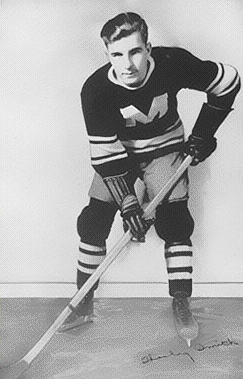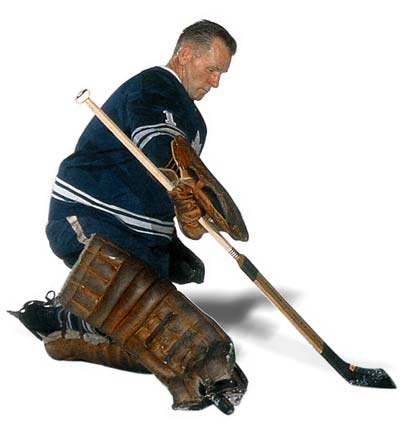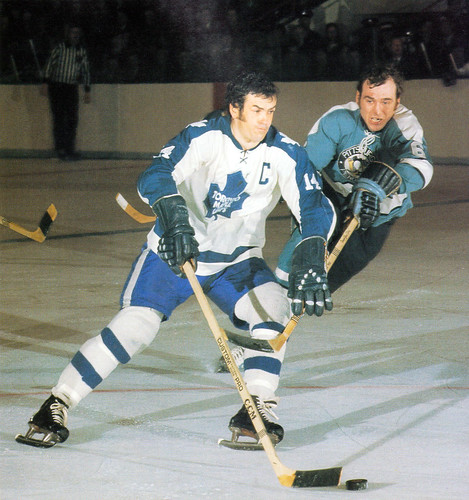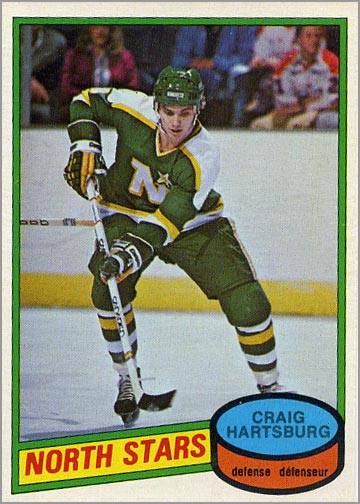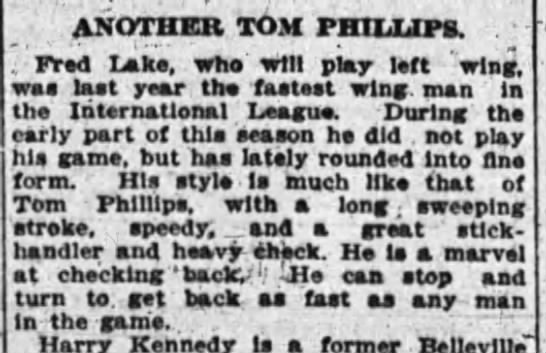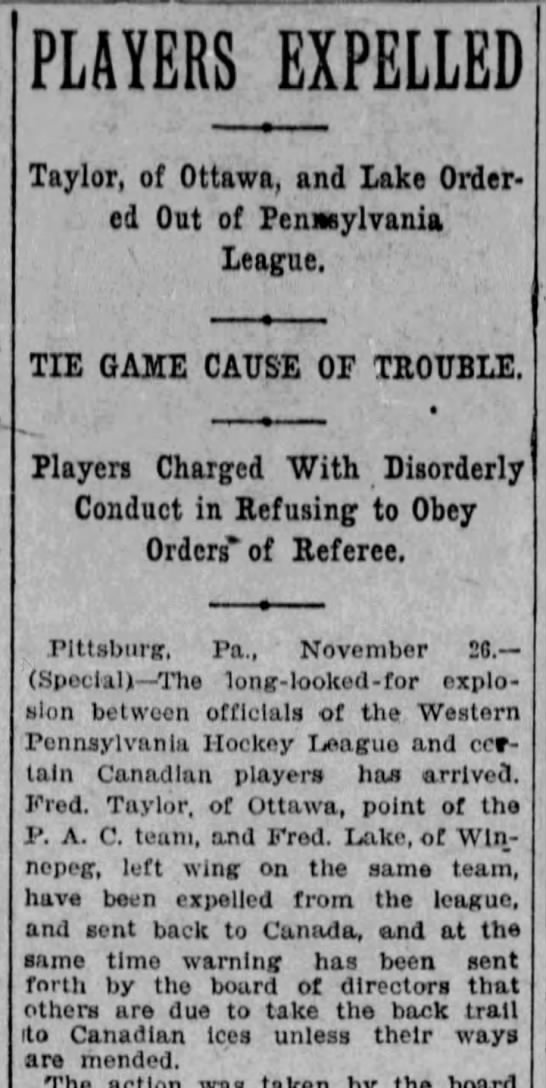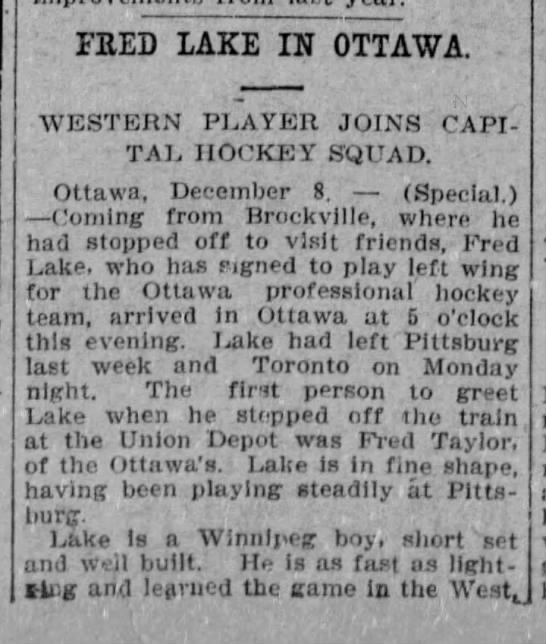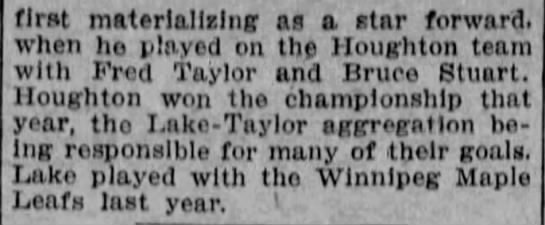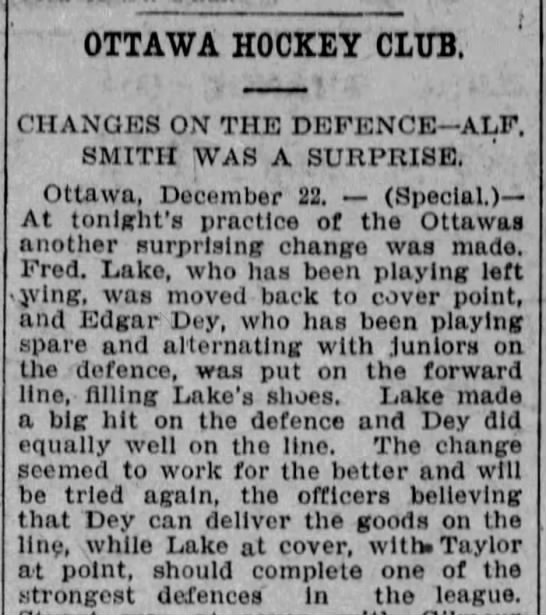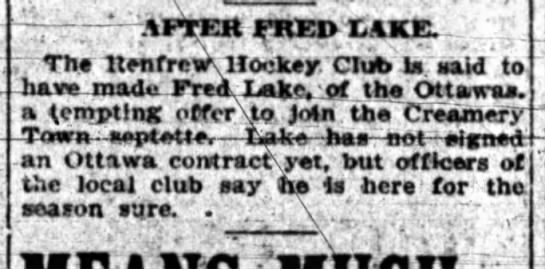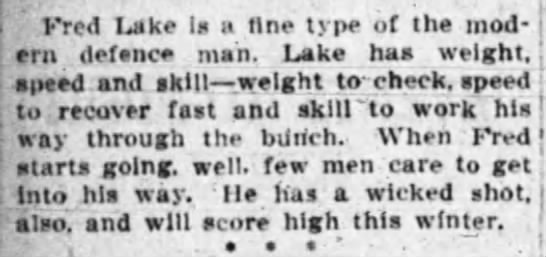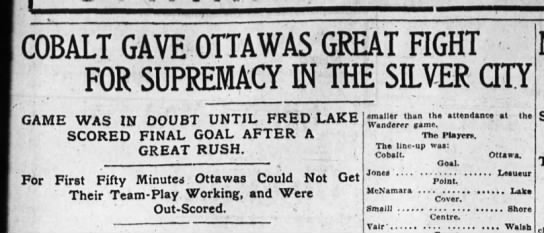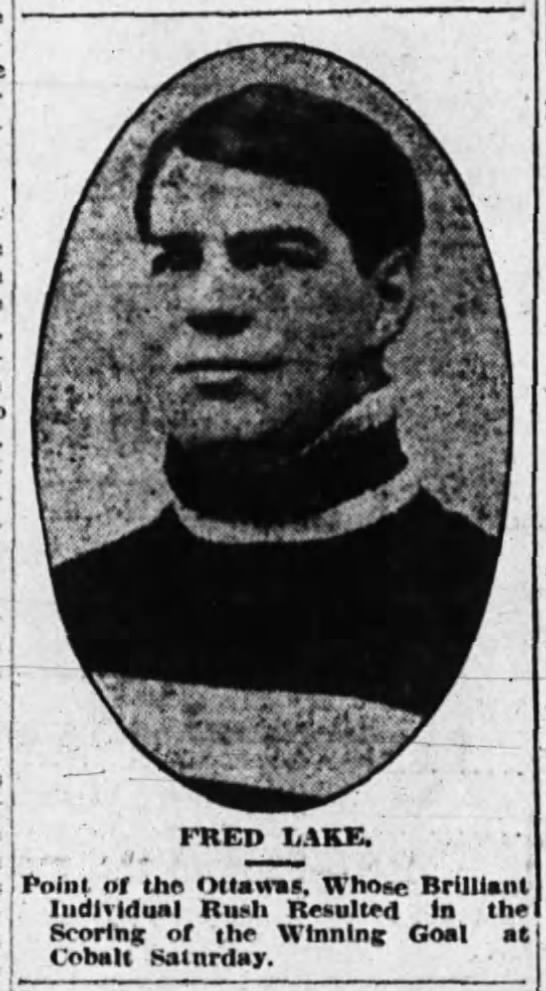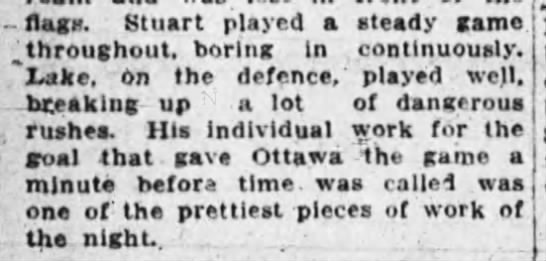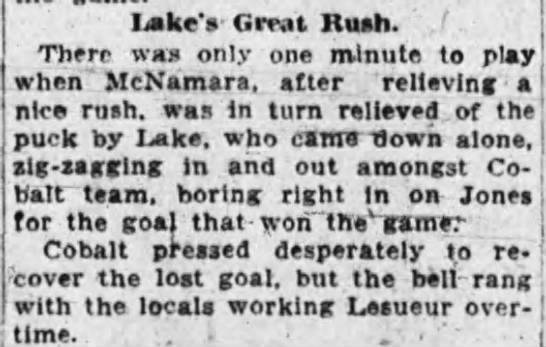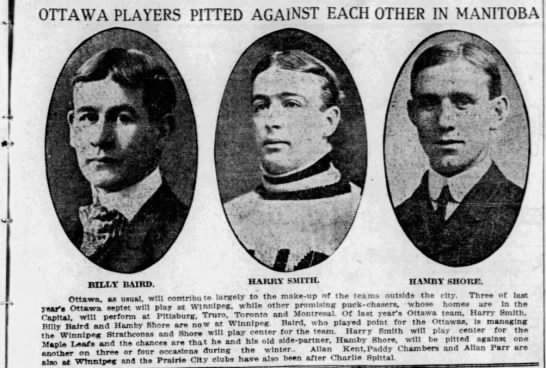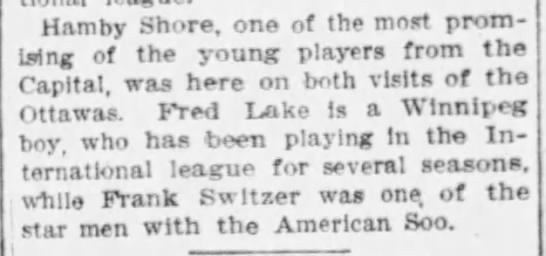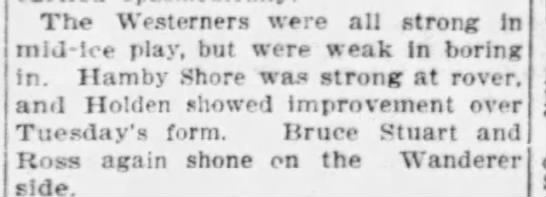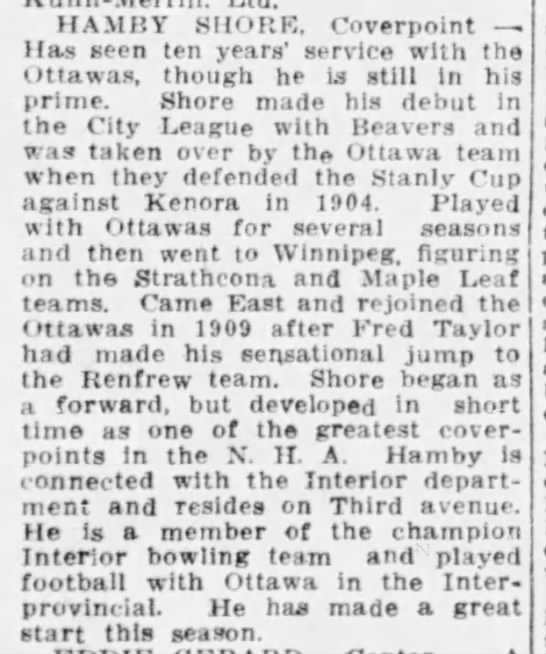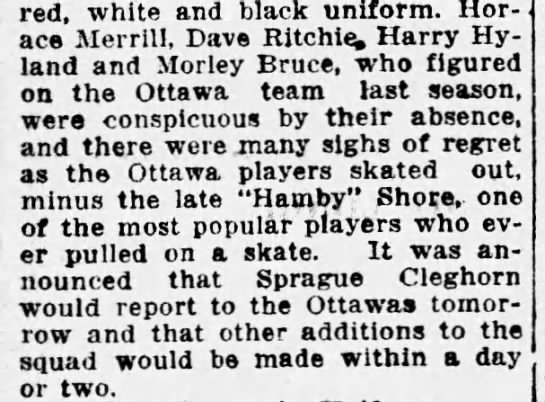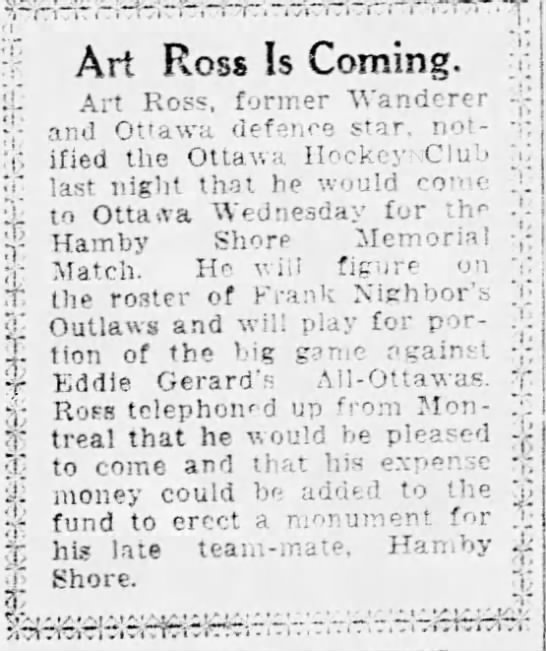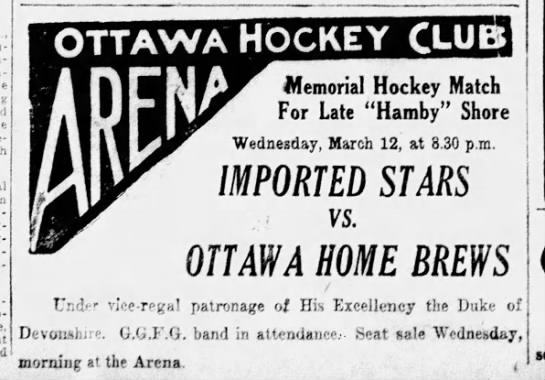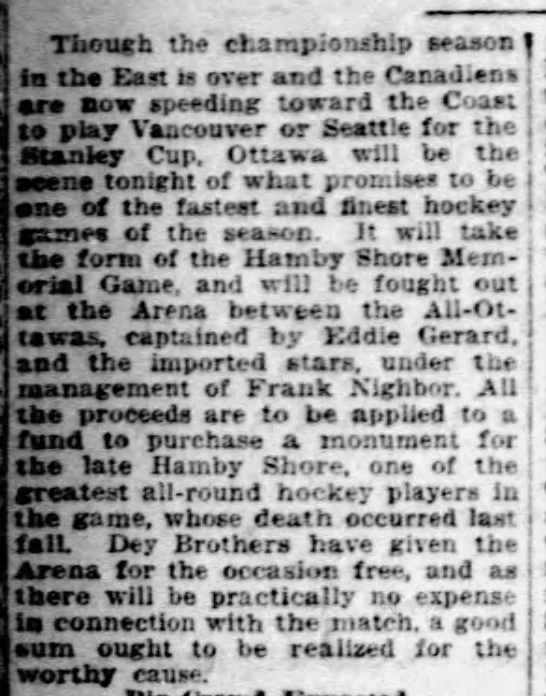Dreakmur
Registered User

Anatoli Firsov !!!
Anatoli Firsov said:If the opponents treated me fairly, I never touched them. But if they played dirty, I always kept my stick on the level of their teeth.
International Awards and Achievements:
3 x Olympic Gold Medalist (1964, 1968, 1972)
6 x World Championship Gold Medalist (1965, 1966, 1967, 1969, 1970, 1971)
Olympic MVP (1968)
3 x IIHF Best Forward (1967, 1968, 1971)
5 x IIHF All-Star Team (1967, 1968, 1969, 1970, 1971)
International Scoring Accomplishments:
Olympic Points - 1st(1968), 7th(1972)
Olympic Goals - 1st(1968)
Olympic Assists - 3rd(1972)
World Championship Points - 1st(1967), 1st(1969), 1st(1971), 3rd(1970), 6th(1965)
World Championship Goals - 1st(1967), 1st(1969), 1st(1971), 7th(1970), 8th(1965)
World Championship Assists - 1st(1967), 1st(1970), 2nd(1971), 6th(1965), 9th(1969)
Domestic Awards and Achievements:
9 x Soviet League Champion (1963, 1964, 1965, 1966, 1968, 1970, 1971, 1972, 1973)
5 x European Cup Champion (1969, 1970, 1971, 1972, 1973)
3 x Soviet League MVP (1968, 1969, 1971)
5 x Soviet League First Team All-Star (1964, 1966, 1967, 1968, 1969)
Soviet League Second Team All-Star (1971)
Domestic Scoring Accomplishments:
Points - 1st(1966), 2nd(1967), 2nd(1968), *3rd(1964), 4th(1965), *5th(1969), *5th(1970), 7th(1963), 9th(1973), 10th(1972)
Goals - 1st(1966), 2nd(1967), 2nd(1968), 3rd(1964), 3rd(1973), 5th(1969), 5th(1970), 8th(1965)
Assists - 1st(1965), 2nd(1968), 3rd(1966), 9th(1972), 10th(1967)
1964 - no player has assist totals
1969 - some players have assist totals, but Firsov does not
1970 - some players have assist totals, but Firsov does not
Batis did a statistical comparison where he combined all international scoring from each season - from 1965 to 1989 - and compared those totals to the average total of scorers 2 through 10. The methods can be seen in this thread.
The 5-year average for some of the top players:
1. Sergey Makarov: 154.4
2. Anatoly Firsov: 153.5
3. Valery Kharlamov: 147.6
4. XXXXXXXXXX: 145.6
5. XXXXXXXXXX: 144.7
6. Boris Mikhailov: 144.1
7. XXXXXXXXXX: 140.7
8. Vyacheslav Fetisov: 119.1
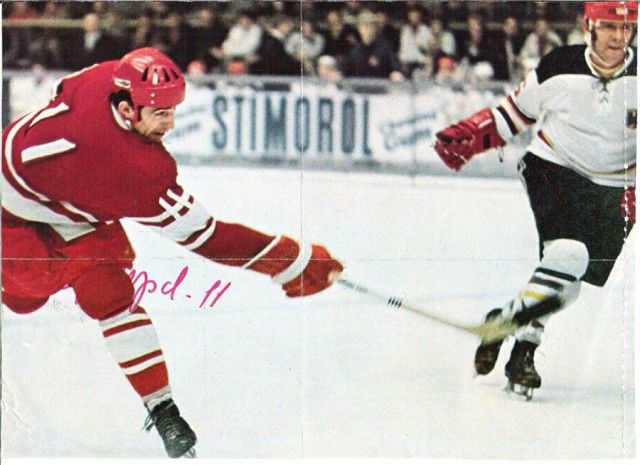
Batis also did a deep dive into the Soviet Player of the Year voting. He compared the voting shares of the top forwards in this thread.
Soviet Player of the Year voting shares:
3-year average
1 Anatoly Firsov 0.769
2 Sergey Makarov 0.747
3 XXXXXXXXXX 0.630
4 Valery Kharlamov 0.628
5 XXXXXXXXXX 0.592
6 Boris Mikhailov 0.434
5-year average
1 Sergey Makarov 0.660
2 Anatoly Firsov 0.594
3 Valery Kharlamov 0.522
4 XXXXXXXXXX 0.516
5 XXXXXXXXXX 0.469
6 Boris Mikhailov 0.358
7-year average
1 Sergey Makarov 0.551
2 Anatoly Firsov 0.451
3 Valery Kharlamov 0.440
4 XXXXXXXXXX 0.388
5 XXXXXXXXXX 0.383
6 Boris Mikhailov 0.316
Kings of the Ice said:Tarasov always admired Firsov, and together they were a fortunate combination. They both valued hockey above anything else in their lives. For them, hockey was where you could be creative and invent new strategies every day.For Tarasov, Firsov's total dedication to hockey was backed by a unique combination of abilities. Firsov's style of play was based on his speed in several aspects of the game. The first was his ability to think fast. Firsov's game was a continuous flow of actions. In tough situations, he got his bearings instantly and came up with the most unexpected solutions. He also displayed uncanny speed in executing any technical maneuver in handling or passing the puck. And finally there was his terrific skating speed.
Each of these abilities compounded the others. During a play, his thoughts and actions were synchronous and usually resulted in a complete and correct solution. Firsov's game on the ice consisted of a blend of his own peculiar manner of back and forth skating, stickhandling and sudden and covert passes topped of with a variety of shots on goal. He moved all the time without knowing it, even when taking a shot on goal. He was especially good at the trick of "losing" the puck by letting it slide towards his foot. Naturally the opposing defenseman would make a grab for it, but Firsov would pass the puck with his skate up to the blade of his stick, all the time picking up speed.
No one was as selflessly dedicated to hockey as Firsov or as hard on himself and fanatical in workouts. He even augmented the tough drills designed by Tarasov. Coming down the ice with the puck, he would perform a variety of hops, skips and jumps at the same time.
The Red Machine said:Of all the Russian players Seth Martin faced in the 1960s, none, he said, compared with Firsov. To Martin, he was the Gretzky of his time, a creative scoring machine. Firsov wasn't a big man but possessed a whiplash shot. An unselfish player, he enjoyed setting up goals as much as scoring them. The Soviet coaches had tried teaching their players a "skate-stick" feint. The player would pass his stick over the puck, as if missing it, and then, when the defending player went for it, kick it around him with the skate. Only Firsov would perfect it.
Hockey handbook (1977) said:One of the best players in the history of Soviet and world hockey. Equally skilled as a playmaker and a finisher. A fine technician, he particularly stood out with his powerful and sudden slapshot, his fast skating and his perfectly honed dekes, including the feint 'skate to stick'. Had good vision of the ice and directed the attacks of his linemates impressively. He was masterful on his skates. A very clean player and a smart mentor for younger players.
History of Russian Hockey – Part 1 said:The next torch-carrier of Soviet hockey was Anatoli Firsov. He was a forward and played from 1958 to 1974. Firsov was one of the best hockey players ever because of his brilliant skills and extremely hard slapshot. He also innovated many of the moves that today’s forwards use to beat defenders.
1972 Summit Series: A September to Remember said:It is a common argument by proud Canadians that if Bobby Orr was not unable to play due to injury, the 1972 Summit Series would have been a much different story. Orr was at the prime of his career and the best in the world. Russia too was missing one of their biggest stars, if not their biggest: Anatoli Firsov
Firsov was perhaps faster than Kharlamov, who of course wowed Canadian audiences with awesome speed. It was Firsov's scoring exploits that helped establish the Soviet Union's dominance of the international hockey scene. Firsov, along with names like Vyatcheslav Sharshinov, Vsevolod Bobrov and Victor Populanov paved the ways for the powerfully awesome Red Army squads that would prove that they were the equals of the professionals in the National Hockey League.
In all fairness, by the time 1972 rolled around, Firsov was near the end of his career and was not the dominant player in Soviet hockey at that time. The torch had been handed to Valeri Kharlamov earlier in 1972 as Kharlamov led the Red Army to Olympic Gold. The Soviets believed that young hockey players were better because of their fitness level and biological clock, and almost as a rule would retire hockey players in their early 30s. That changed after the 1972 and 1974 Summit Series after they saw first hand the greatness Canadian aging stars like Gary Bergman or Gordie Howe.
Firsov likely would have been a part of the 1972 series had Anatoli Tarasov been the coach. Tarasov and Vsevolod Bobrov, who ended up coaching the 1972 team, were undergoing a power struggle at the time, and Bobrov was winning at that point and time. Firsov however was a staunch Tarasov loyalist, and refused to participate in the series against Canada. The official reason for his absence was injury.Anatoli Firsov never had the chance to prove to the world that he could play and excel against North American professionals. That's a shame because that means only a precious few saw perhaps the greatest Russian hockey player ever.
International Hockey Legends said:Anatoli Firsov also missed the 1972 Summit Series showdown between the Soviets and the NHL. He is of legendary status in Russian hockey. Some old time Russian observers will tell you he was the best ever. Legendary coach Anatoli Firsov was probably his biggest fan. Then again, he was also Tarasov's most dedicated disciple.
Chidlovski: 1974 Summit Series said:Known for his booming slapshot, Firsov might have rivalled Canada's Bobby Hull if he had been permitted to play in the NHL; enjoyed three straight Olympic gold medals from '64 to '72.
Wikipedia said:No one was as selflessly dedicated to hockey as Firsov or as hard on himself and fanatical in workouts. He even augmented the tough drills designated by Anatoli Tarasov. Coming down the ice with the puck, he would perform a variety of hops, skips and jumps at the same time.
He strengthened his body by choosing the roughest, toughest defense men as his opponents, Alexander Ragulin and Viktor Kuzkin.
The Voice of Russia in New York City: Russia remembers Soviet star puckster said:Hockey fans appreciated Firsov’s professionalism that often helped him score eyebrow-raising goals, which was, for example, the case with one scored during the decisive match between the USSR and Canada at the 1968 Olympic Games in Grenoble. He managed to score a goal from a long distance without even looking at renowned Canadian keeper Seth Martin.
Being himself was Firsov’s trait that helped him to adequately perceive his skyrocketing popularity ratings in the 1960s, and that was especially thumbed up by his fellow players, fans and journalists.
The Globe and Mail - December 27th said:Anatoli Firsov, the hard shooting Russian centre, played a strong, vigorous game, consistently setting up linemates Vladimir Vikulov and Victor Popupanov.
Vellu Ketola said:A perfect hockey player? To me Anatoli Firsov was one. Anatoli had it all. [...] That man (Firsov) was a shooter, skater, passer, playmaker. And he was tough - which was rare among the Russian forwards at the time. [...] A top player in every way; he had incredible vision.At his best, Kharlamov might have been a better 'solo artist' and a better dangler, but he lacks Firsov's skills in many other areas.

Valery Kharlamov (1979) said:My teammates and I believed that Anatoly Firsov was the number one player in Soviet hockey, not only in his time but also in the history of our sport.
Anatoly Tarasov (1974) said:In my opinion Firsov was the best forward of the 1960s, even if you compare him with the Canadian professionals.
Anatoly Tarasov (1968) said:The most striking feature of Anatoly's game is speed. First of all, the speed of thought. Sometimes it seems to me that Firsov's game consists of a continous succession of brilliant thoughts: even in the most tense situation, he immediately orients himself and finds the most surprising solutions. Next the speed with which he uses this or that technical skill, passes or stickhandles. And then the speed of his feet. Put these three speeds together and they multiply. The way he thinks the game, there is no separation between the idea and the execution. He conceives synchronously with the actions and acts synchronously with the search for the right solution.
David Bauer (1968) said:Both the NHLers and the Soviets have their own qualities. It would be difficult for the players to play on the team of the opponent. In my opinion the only Soviet players who wouldn't be at loss [switching to the NHL] would be Firsov and Starshinov.
Vyacheslav Starshinov (1971) said:Don't let him get started. Pressure him actively. Playing against Firsov is no joke. Vikulov's shot is not always on target, but Firsov can shoot and he knows how to give a sharp pass. Firsov is Firsov. He's a stronger player than his linemates.
....
In the technique of Firsov and in his manner to play, all the best qualities of our strongest forwards seem to come together: the ability to change the direction and rhythm of the attack abruptly and unexpectedly peculiar to Boris Mayorov and the brilliant stickhandling and fine speed of Veniamin Aleksandrov.
Josef Černý (1973)[/quote said:Hockey is not just a game of strength, agility and speed, but also one of tactical prowess. And that's why Firsov is one of the best masters. (...) He's a clever and cunning fox who knows dozens of paths to the cherished goal. For every step you take, for every attempt you make to beat him, Firsov has a convincing answer, a witty reply and an unexpected feint.
Anatoly Tarasov (1974) said:Firsov was more often on the ice than anyone else and the demands on him were high. He was sent on when CSKA had the man advantage and he stayed on the ice when the team was shorthanded.
Vladislav Tretyak (1979) said:He went out on the ice and the stands immediately started to buzz in expectation of a goal.
Anatoly Tarasov (1987) said:An individual uniqueness in performing a cascade of feints, stickhandling, concealed passes, and of course his shots, trained to perfection and used variably depending on the game situation, but with the invariable outcome of a goal – all of this is what made Anatoly Firsov stand out even among the relatively small group of elite forwards from our country and others. Anatoly mastered all means of attack perfectly well.
Vyacheslav Fetisov (2008) said:A couple of generations of kids grew up wanting to play hockey because of Firsov and what he did on the ice. He was electrifying. His shot was unstoppable. All the tricks he did on the ice are unrepeatable.
Marshall Johnston (2008) said:Firsov might have been the best hockey player I've ever seen.
Scotty Bowman (2010) said:Russia have always had great players , but the best I've seen, was no doubt, Firsov. He was just a brilliant passer! And had magical hands.
Creativity and Deception:
Anatoly Tarasov (1968) said:The partners on his forward line know him well, but even they can never say with certainty what he is going to do in the next moment. Therefore they always try to be ready. They're always waiting for his pass.
Anatoly Tarasov (1971) said:To me, the most outstanding feature of Firsov's talent is the speed of his actions and his decisions. And the way he covers and hides them. Approaching the opponent, he appears relaxed, perhaps even a bit sluggish, but in the next instance he explodes and turns into a passionate and fierce athlete. These instant transformations are the feature of Firsov's talent that make him stand out...
....
In his constant search. In his endless and inexhaustible creativity. In the constant and unique novelty of his decisions.
....
Who understands a complex game situation better than Firsov? His shots – sometimes spectacularly powerful and sometimes cunning and stealthy – deceive every goaltender and his passes are perfect and unexpected. Even his smart linemates are often unaware of what he is about to do.
Puck Control:
Jack McLeod (1968) said:Puck control? Both [Boston Bruins and the Soviet national team] are on par. Esposito and Firsov are exemplary.
Anatoly Tarasov (1971) said:If you look closely at Firsov you will notice that he always opts for a solution that is on the verge of a mistake. He rarely beats an opponent cleanly when he goes one against one and he often loses the puck over the course of a battle. But his strength is that he most often wins it back immediately. Occasionally Firsov loses the puck two or three or even four times during an individual battle. The reason is not a weakness in his stickhandling, it's his decision to make a direct, knife-like move towards the goal that leads him into a difficult spot. Without looking for a simple solution, he jumps straight into the risk and tries to slip through two or even three opponents at once. He wants to draw the main force of the opponent on him to make the job of his comrades easier. Of course, that approach doesn't allow him to count on simply outplaying the opponents. Firsov 'plans' to lose the puck, so to say, but at the same time he sets himself up to get it back quickly.
Put yourself in the position of the defenceman and try to imagine his attitude and psychology in the happy moment when he has stopped the attack and beat the forward. Now, as soon as he has won the puck, he must raise his head to see who to pass to and what decision to make. And because of that, he is forced to take his eyes off the puck for at least a split second... And that is exactly the moment Firsov anticipates to win back the puck.
Team Play:
Anatoly Tarasov (1968) said:On the second line [of CSKA] there were Leonid Volkov, Valentin Senyushkin and Anatoly Firsov. It's no secret that Firsov was individually the strongest player on that line. But the manner of Firsov's game is such that he never asks others to serve him. He gladly plays towards his comrades.
Anatoly Tarasov (1971) said:He never leaves a partner in trouble, he always comes to his rescue and always works for him. In order to make life easier for his partners, Firsov puts himself second.
Valery Kharlamov (1979) said:Anatoly Firsov set records not only with the results he achieved but also with how devoted he was to the interests of his comrades.
Boris Mikhaylov (2008) said:This great master was demanding to himself and selfless towards his linemates in the game.
Shooting:
Anatoly Tarasov (1971) said:Both CSKA and the national team have frequently used Firsov as a defenceman, ususally when we have a powerplay. More than once have his shots from the distance reached the net. The high accuracy and power of Firsov's shots are explained by his magnificent technique, great strength of hands and the excellent development of his pectoral arch.
Vladislav Tretyak (1979) said:Goaltenders were afraid of his lethal slapshot. He shot the puck with such force and speed that it was not possible to follow it.
....
Swedish hockey has a lot of experience in training goaltenders. As far as I know, there was only one player in amateur hockey who made the Swedish goaltenders tremble: Anatoly Firsov. Once he had unleashed his famous slapshot, the goalie didn't have time to blink before the puck was in the net. Sometimes I think how lucky I was that Firsov played on my team and I never had to face him as an opponent. I know that some goaltenders surrendered in advance and just closed their eyes when he swung his stick.
Anatoly Tarasov (1987) said:Unlike many current hockey players, he never used his famous shot blindly. Anatoly saw everything and took everything into account: the goaltender coming out and the position of the partners and the opponents. Depending on the situation, he could pause before shooting or put the puck on the stick of a linemate. Only the result remained the same: a goal was scored.
John McGouty said:Firsov possessed the hardest slap shot in international hockey, as well as a quick and accurate wrist shot.
Boris Mikhaylov (2014) said:He was often used as the fourth forward and his slapshot was the best in Europe.
Toughness:
Anatoly Tarasov (1968) said:During the match, Firsov willingly takes on a tough battle. Lean and of medium height, he doesn't look like a giant but is inclined to demonstrate his colossal strength at any time.
Veli-Pekka Ketola (1979) said:He was tough – which was rare among the Russian forwards at the time.
Anatoly Tarasov (1987) said:True, he never had the appearance of a strongman, but only a few opponents were able to win a one against one battle against him and even then rarely.
Leadership:
Anatoly Tarasov (1968) said:He is an Olympic champion, four times champion of the World and of Europe, has won the championship of the USSR and is written and spoken about, but the glory has not spoiled him at all. This 'star' is the furthest from the disease of considering himself a 'star'.
Anatoly Tarasov (1971) said:This talented hockey player appears to already have learned and mastered everything, but he still approaches me and he asks me – I emphasize, he himself asks! – to raise the demands on him: to think up a new exercise for him and give him a new task.
Vladislav Tretyak (1979) said:We particularly appreciated Firsov for his ability to lead the team and rally the guys in difficult moments. He was the captain of CSKA Moscow and something of a playing coach.
Valery Kharlamov (1979) said:Performing next to such a master as Anatoly Firsov, I discovered many intricacies of hockey in a new fashion. I developed a different and deeper understanding of the tactics of the game.
Anatoly Tarasov (1968) said:Anatoly Firsov was a good teacher. He supported Viktor and Vladimir very calmly, benevolently and tactfully. He did not boast with his experience but consulted both as his equals, and the two guys, especially the somewhat insecure Polupanov, literally flourished from the respect shown to them. (...) It is thanks to him that the young line with Polupanov and Vikulov grew by leaps and bounds.
....
His passion [for training] infected many other players, especially the younger ones.
Boris Mikhaylov (2008) said:Firsov was easy to talk to and he was never rude to the youngsters.
Shut-Down Ability
Batis said:During the Top-50 Non-NHL European project it was brought up by VMBM that Firsov not was on the ice for a single goal against during the 1969 WHC and only for one goal against during the 1972 Olympics.
This made me want to look at whether Firsovs ability to prevent goals against would be possible to see during the available games on youtube too. And it turned out that it was. In the available games with Firsov he was only on the ice for 1 goal against at even strenght (against Sweden in 1968) and 1 goal against while penalty killing (against West Germany in 1968). So all in all only 2 goals against during approximately 11 games. As a comparison the Mikhailov, Petrov and Kharlamov line was on the ice for more goals against during these games even if they only played in 4 of them.
If we add the remaining 8 games from the 1969 WHC which are not available on youtube and the 5 games from the 1972 Olympics to the 11 available games we see that Firsov only was on the ice for 3 goals against during a sample size of 24 games. So in my opinion we have a very good reason to believe that Firsov had some abilities which often helped him and his linemates to prevent the other team from scoring while he was on the ice.
Based on watching these games focusing on him I would personally say that one of Firsovs most important qualities when it came to prevent the other teams from scoring was his ability to help out his defencemen with the transition from defence to offence by giving them support along the boards and make great passes from his own zone. Firsov also had the ability to use his stickwork to steal pucks from his opponents and regain puck possession for his team. Firsov was also a player who was not afraid to get his nose dirty. He was a hard worker along the boards both offensively and defensively and he was most of the time very responsible on the backcheck when he had to cover up for when some player had been caught out of position.
Batis said:To add to what I wrote above I would say that the main reason for Firsovs low goals against numbers is that he could tilt the ice so much in his teams favour with a combination of his ability to keep puck possession for his team and his ability to steal the puck back when his team did not have possession of it. Before someone brings up that Firsov never proved that he could do this against the best the NHL had to offer let us remember that Firsov in these 11 available games on youtube was in on less goals against than the Kharlamov-Petrov-Mikhailov line was in on even if they only played in 4 out of those 11 games. And that line very much showed that they could more than hold their own against the best the NHL had to offer.
Additionally I have worked on looking at Firsovs R ON/R OFF during the available footage and while that post is not quite ready yet I can already say that his results there are extraordinarily strong. Especially his importance to the Soviet team in the games against their two strongest opponents Czechoslovakia and Sweden. In the 6 available games against those two teams Firsov had an 6:1 ratio at even strenght while his team actually was outscored when Firsov not was on the ice with a 8:10 ratio at even strenght. It is also worth noting that 4 out of the 6 available games against Czechoslovakia and Sweden are from the 1969 and 1970 WHCs which means that the Kharlamov-Petrov-Mikhailov line stands for a big part of Firsovs R OFF in those games.
Here is the beforementioned quote from VMBM which suggests that Firsov most likely had exceptional R ON/R OFF numbers even beyond the available footage.
VMBM said:According to a Finnish sports book, the Soviets did not allow a single goal when Firsov was on the ice at the 1969 World Championships (USSR allowed 23 goals in the tournament). And according to the same book, the Vikulov-Firsov-Kharlamov-Tsygankov-Ragulin unit allowed only 1 goal (and scored masses) at the 1972 Olympics, and Firsov had very much a defensive/playmaking kind of role in the tournament.
Penalty killing:
Additionally Firsov was in my opinion one of the 10 best penalty killers among Soviet forwards. Here is the post about Firsov from the Soviet penalty killing study.
Batis said:4. Anatoly Firsov
Ice time finishes: 1st at the 1967 WHC, 2nd at the 1969 WHC, Tied for 3rd at the 1964 WOG, Tied for 3rd at the 1968 WOG
Overall stats: 1 goal forward, 1 goal against over 17 min, 50 sec
Anatoly Firsov was such a talented, elegant and intelligent player that he at times could make playing shorthanded look like the easiest thing in the world. In this I include both his ability to play keep-away with the puck and his ability to pick the pocket of the opponents. Based on the available sample I would also say that Firsov just like Starshinov probably belongs among the very greatest Soviet forwards of all time when it comes to killing penalties 3 on 5.
Firsovs goal differential stats of 1 goal forward and 1 goal against over 17 minutes and 50 seconds of shorthanded ice time is also impressive and an indication of his ability to frustrate the opponents powerplay units with his combination of skating, stickhandling (both offensively and defensively), creative passing and hard work.
Last edited:

